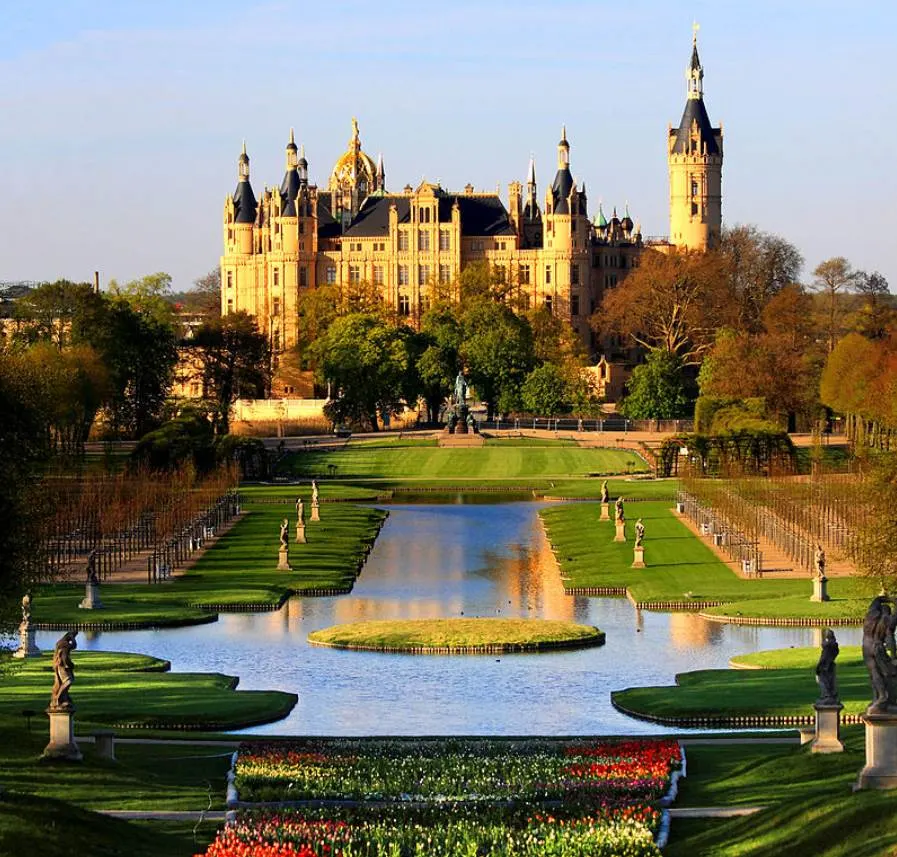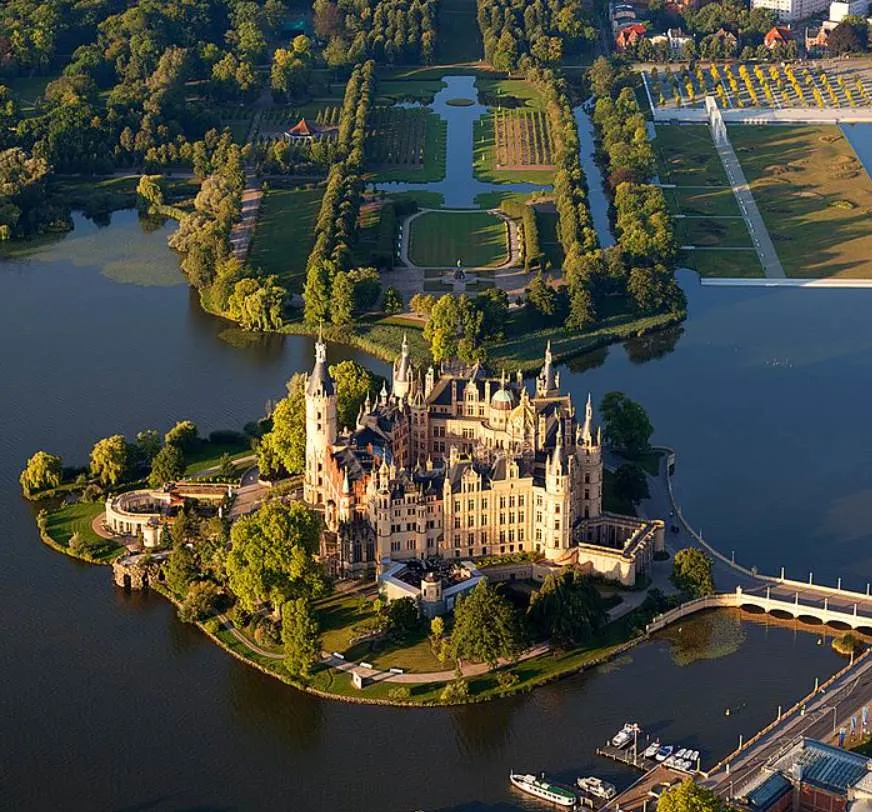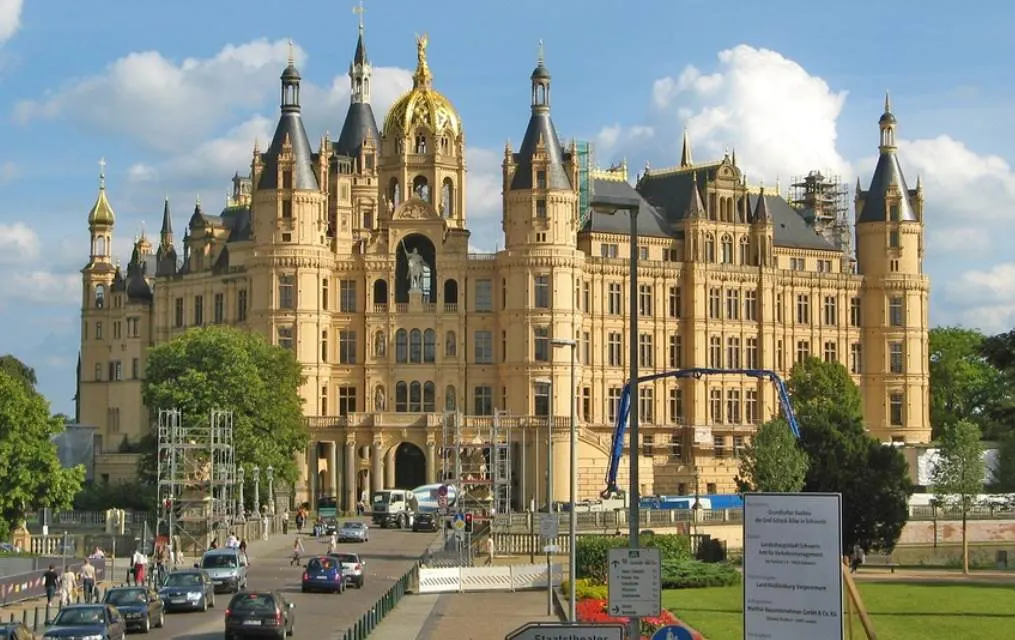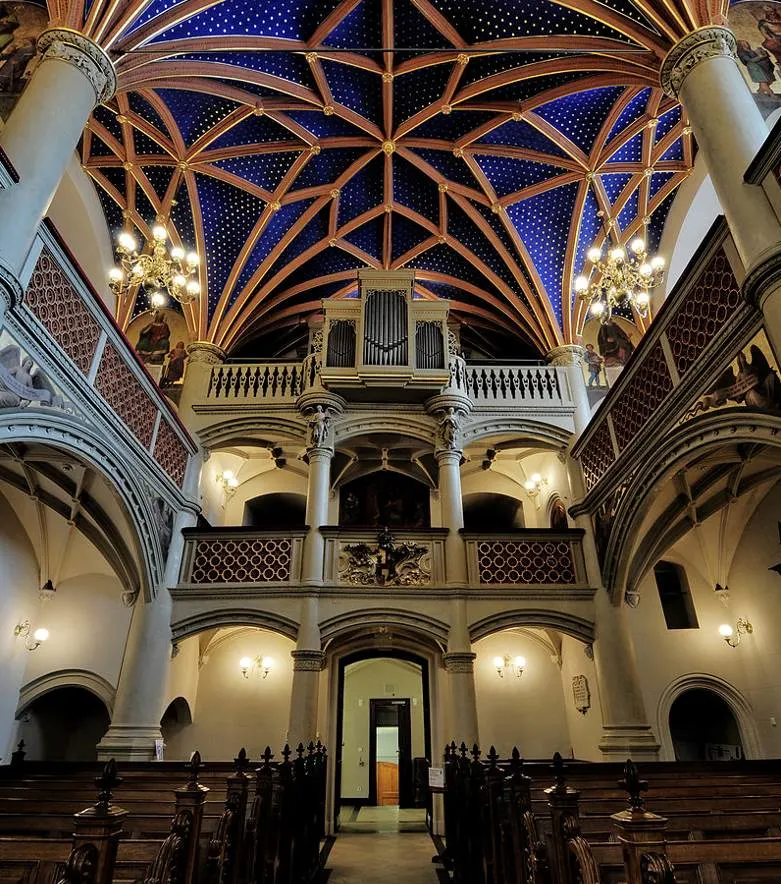Germany is home to several of Europe’s most amazing castles, especially in the southern part of the country.
Neuschwanstein Castle and Hohenzollern Castle are some examples of buildings that belong in the world of architectural awesomeness.
In this article, we’ll take a closer look at some of the most interesting facts about Schwerin Castle, one of the most picturesque castles in the world that has an extensive history.
1. It’s located on a small island in lake and city with the same name
Schwerin Castle is an incredible structure located on a small lake island in the southwestern part of Lake Schwerin. This lake is located just east of the city of Schwerin in the northern part of Germany.
This city is the capital and second-largest city of Mecklenburg-Vorpommern, the utmost northeastern state in Germany. The city has nearly 100,000 inhabitants and only Rostock, with a population of 200,000 inhabitants, is larger.
Schwerin has been an important city in the region since the Middle Ages as it served as the seat of the grand dukes of Mecklenburg since the 12th century.
This historic region in northern Germany was transformed into the German state of Mecklenburg-Vorpommern after World War II in 1945.

2. A castle has already existed on this location since the 10th century
One of the most remarkable facts about Schwerin Castle is that the original structure on this location wasn’t constructed by German people but by Western Slavic tribes. These tribes formed a medieval confederation of Slavic tribes called the Obotrites.
One of these tribes in this confederation was called the Polabian Slavs. They lived along the Elbe River in what is now the eastern part of Germany. They are credited with building the first castle on Lake Schwerin.

The first mention of this Slavic fort was recorded in the year 973 and the remains of the mound of this fortified structure have been excavated.

3. The city of Schwerin and the castle were established at the same time
The Germanic peoples gradually conquered the Slav tribes that lived in this region and they recognized the strategic location of the lake island.
The first Germanic castle on the island was constructed during the reign of Henry the Lion (1129–1195). It was built on the remains of the Slavic fort which was demolished by the Obotrites themselves.
The Slavic tribes were permanently defeated in 1160 and the Germanic fort was constructed shortly after. The city of Schwerin was established in the same year and became one of the most important cities in the region.

4. The castle was renovated during the Renaissance but never completed
The castle has served a defensive purpose ever since it was constructed but this was completely changed in the 16th century. The northern Renaissance flourished and medieval fortifications made way for Renaissance architecture.
This project was initiated by John Albert I, Duke of Mecklenburg (1525–1576) who turned the castle into a fabulous palace. The castle was decorated with terracotta, a prominent material used in buildings in the northern part of Germany at the time.
Despite the emphasis on comfort and decorations, bastions were constructed on the northwest, southwest, and southeastern parts of the castle. After all, the location on the island wasn’t enough to ensure full protection.
The Renaissance style continued to be popular due to the magnificent buildings constructed in Low Countries at the time. Additional changes were made between 1635 and 1643 but these plans were never fully realized because of the Thirty Years’ War.

5. It was rebuilt in the Historicism architectural style in the 19th century
The result of the incomplete renovation project in the 17th century was that the palace had become a collection of buildings featuring different architectural styles. The structure had been abandoned as well and was in poor condition at the start of the 19th century.
The final renovation project of the castle was initiated by Grand Duke Friedrich (1800–1842) and continued by his successor Friedrich Franz II (1823–1883).
The result was the epitome of Romantic Historicist architecture. It was inspired by the French Châteaus of the Loire Valley, including the amazing Château de Chambord, and most of the work was completed between 1845 and 1857.

More interesting facts about Schwerin Castle
6. The Slavic prince who the German peoples defeated to take control of Schwerin was a man named Niklot. The Germans eventually returned the County of Schwerin to the son of Niklot named Pribislav.
7. Pribislav became the first Prince of Schwerin between 1167 and 1178. This was the start of a hereditary ducal line that lasted until the final Duke of Mecklenburg was abdicated in 1918.
8. The city of Schwerin became part of the Duchy of Mecklenburg in 1358. This was also the year that the city became the official seat of the grand dukes of Mecklenburg and Schwerin Castle became their official residence.
9. When the city was established, it also became the seat of the diocese of Schwerin. The Dukes of Mecklenburg became Protestants and the first new Protestant church in the region was constructed between 1560 and 1563 within the castle compound

10. The main reason why the castle was in a dilapidated state in the early 19th century is that the court of the Dukes of Mecklenburg had moved out of it in 1756. The dukes only returned in the year 1837 after which the castle received its final redesign.
11. One of the main attractions of the castle’s exterior is the Orangerie. This structure has been used as a museum since 1961. Other parts of Schwerin Castle have been used as an art gallery as well.

12. The interior of the castle is believed by some to be inhabited by a ghost named “Petermännchen” or “Little Peterman.” He appears in clothes of the 17th century and isn’t larger than the average leprechaun.
13. Because the structure resembles some of the most famous Romantic buildings in history, it is sometimes referred to as the “Neuschwanstein of the North.”
14. The building was seriously renovated in a project that started in the late 20th century. This project wasn’t completed until the year 2019. The main reason was that the building serves today as the seat of the Landtag, the government of the State of Mecklenburg-Vorpommern.
The castle is quite an amazing government building, don’t you think?

